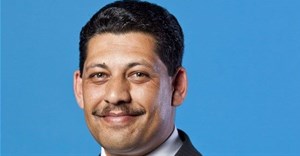Subscribe & Follow
#CannesLions
- The new standardCarl Willoughby
- All the South African winnersDanette Breitenbach
Trending
-

-

-

-
 Sibanye 'isn't short on money', but may shutter metal streamingClara Denina and Felix Njini
Sibanye 'isn't short on money', but may shutter metal streamingClara Denina and Felix Njini -

-
 #YouthMonth: Yoshin Leonard - Young people's voice is a rightDanette Breitenbach
#YouthMonth: Yoshin Leonard - Young people's voice is a rightDanette Breitenbach
Study: Carbon monoxide exposure can be reduced during routine anaesthesia in kids
Doctors at Children's National Medical Centre have found that carbon monoxide levels in the blood of young children increase during routine general anaesthesia. Anaesthesiologists have found for the first time that, under certain circumstances, infants and children may be exposed to carbon monoxide during routine anaesthesia resulting in a rise in the carbon monoxide levels in the child's blood.
Because carbon monoxide can be generated as a by-product of anaesthesia, anaesthesiologists world-wide use specific precautions to prevent and limit its production, according to Richard J. Levy, MD, Chief of Cardiac Anaesthesiology, at Children's National. Dr. Levy's team identified the conditions in which carbon monoxide may be inhaled during anaesthesia:
• The first study demonstrated that carbon monoxide detected in the breathing circuit correlated with the increase in blood levels in children 2 years and older. The study included 15 patients between 4 months and 8 years.
• The second study identified that the patient's own exhaled carbon monoxide may be “re-breathed” during low-flow anaesthesia - the current standard of care - where fresh gas flows more slowly into the circuit, rather than rapidly.
“The main goal is to provide the safest environment for young patients who require surgery,” said Dr. Levy. “We have identified tangible ways to reduce the risk of carbon monoxide exposure, and our hope is that these changes will be implemented internationally.”
Much remains unknown about the effects of low-dose carbon monoxide exposure on the developing brain. Several recent studies have suggested there may be a link to hearing impairments. Though there is more research to be done to determine these impacts, Dr. Levy recommends two immediate changes that will eliminate the risk of carbon monoxide exposure in children:
• In the anaesthesia machine, use carbon dioxide absorbents that lack strong metal alkali and do not degrade inhaled anaesthetics (avoids CO production risk)
• Avoid of low-flow anaesthesia (avoids CO re-breathing risk)
Following Dr. Levy's study findings, Children's National switched to the recommended absorbent to minimise the risk to patients. Although the sample size is small, the results are compelling and Dr. Levy believes changes should be implemented.
Dr. Levy's research has been named the top study out of 600 at the International Anesthesia Research Society 2010 meeting, and won the John J. Downes Research Award for best abstract at the upcoming Society of Paediatric Anesthesia/American Academy of Paediatrics 2010 Annual meeting.
Source: Children's National Medical Centre





